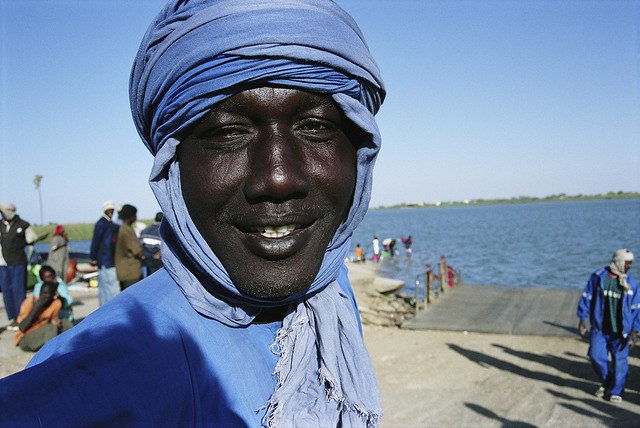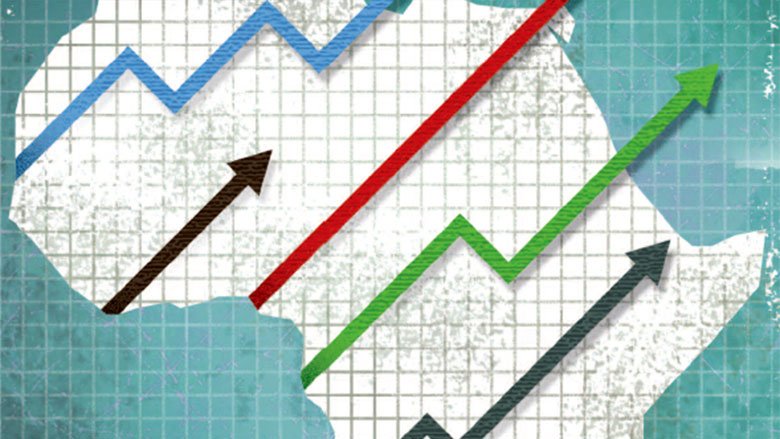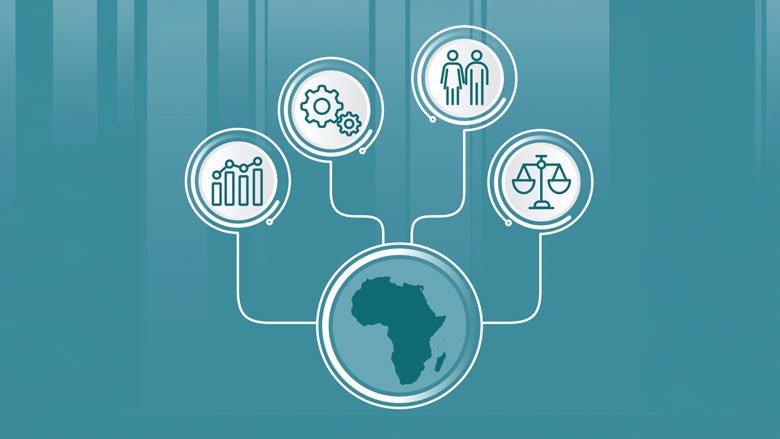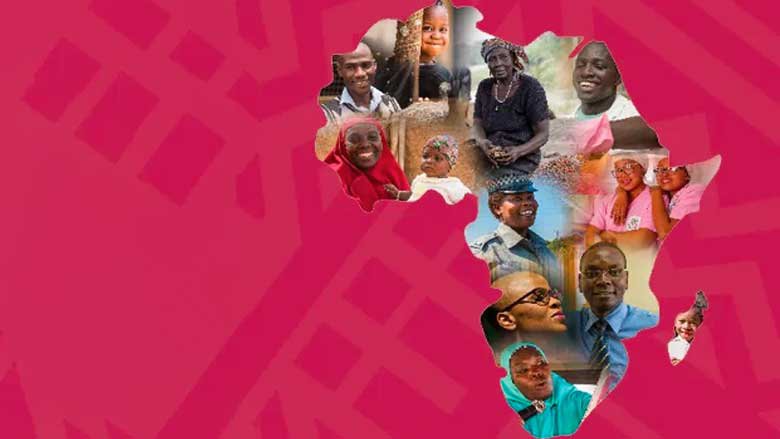Energy and Water
The combined national and regional energy projects under supervision are over $200 million. The Gambia Electricity Restoration and Modernization Project (GERMP, P163568) was approved for $43 million in May 2018 with additional financing of $41 million approved in 2020. Complementary regional projects include the OMVG Regional Interconnection Project (with $47 million World Bank financing out of a $86 million allocation) and the ECOWAS Regional Access Project ($66 million allocation for The Gambia).
This portfolio has enabled much-improved operational and financial performance for National Water and Electric Company (NAWEC). In March 2024, the Gambia inaugurated its first utility scale solar plant of 23MW and 8MWh battery storage supported under the GERMP project. This will undoubtedly help in reducing costs of generation and aiding the financial sustainability of the utility. This is particularly important in consideration of the Gambia’s bold universal access agenda of 2025. Operationally, the deployment of prepaid meters continues to provide significant opportunity to NAWEC in improving collections. Collection efficiency currently stands over 97% denoting the substantive deployment of meters across all customer classes. An organizational restructuring has been completed with the creation of distinct business units (Water & Electricity). Service reliability for water remains intermittent, particularly across the Greater Banjul Area (GBA). To address some of these issues, GERMP includes $11.5 million for the following activities: investments in enhanced water quality solutions at selected water treatment stations; intervention boreholes; rehabilitation of water storage tanks; new network connections; treatment of non-revenue water (NRW); energy efficiency measures; and a pilot to reduce physical and commercial water losses.
Social Protection
The nascent Social Protection System was a critical element of the COVID-19 response. The $30 million Social Safety Net Project (P167260) was restructured in June 2020 and $10 million was re-allocated to support a broader program of short-term cash transfers (Nafa Quick) during the COVID-19 containment period, which benefited 78,422 households in 30 rural districts for 4 months.
The Nafa Program was successfully scaled up in August 2022, to an additional 17 poor districts reaching an additional 14,190 households bringing the total number of beneficiary households to 17,036 households.
The WBG is working with other development partners to support the National Social Protection Secretariat so that it becomes an effective, coordination unit for social protection. The social registry is to ensure that social programs of all sectors are targeted to beneficiaries in need. Data has been collected for the social registry in 36 of the 43 districts of the country.
Health
The Gambia Essential Health Services Strengthening Project supports the 2021-2025 National Health Strategic Plan implementation. Approved in October 2020, along with Additional Financing of $50 million approved in November 2021 and Second Additional Financing of $8.83 million approved in July 2023, aims to improve the quality and utilization of essential health services.
Notable activities the project has supported include:
- The national expansion of performance-based financing of health facilities. The WB financed the introduction of results-based financing in the health sector in 2014.
- The establishment of the national health insurance authority for the rollout of the National Health Insurance Scheme. The WB provided financial and technical support for drafting of the insurance bill and the enactment by the National Assembly.
- Revamping of the postgraduate medical training program to Gambian doctors with the recruitment of international specialist consultants, mainly from West Africa, who are also providing specialist services at the Edward Francis Small Teaching Hospital. Achievements so far this year are accreditations by the West Africa College of Physicians and Surgeons for the programs in Pediatrics, Orthopedics, Obstetrics and Gynecology, and General Surgery; four out of four postgraduate doctors passed the membership examination this year as opposed to two out of four last year; and one senior resident passed the fellowship examination this year.
- Establishing for the first time Bachelor of Sciences (BSc) degree programs for Nurse Anesthesia and for Midwifery, and postgraduate diploma nurse programs for Anesthesia, Midwifery, Pediatrics and Perioperative Nursing; and a clinical simulation laboratory for nursing education.
- Sponsored 23 laboratory technicians to obtain a bachelor’s degree in laboratory in December 2022.
- Establishing an electronic civil registration and vital statistics system which will serve as the foundation for eGovernment thereby making the provision of public services in all sectors more effective and efficient.
- Mass birth registration and national health insurance registration from August 1, 2022 to February 28, 2023. Over 1.1 million people were registered.
- Preparations underway for conducting the World Health Organization (WHO) STEPwise Approach to NCD Risk Factor Surveillance (STEPS) survey.
- Supported the procurement of a mobile cinema truck (the first of its kind in The Gambia) to facilitate the rollout of Social and Behavior Change Communication activities.
- The ongoing construction and equipment, at Farato, of the national emergency treatment center intensive care unit, emergency observation and treatment center, national public health laboratory and training center, national blood transfusion center, conference center and diagnostic imaging center.
- Designs completed and renovation underway for dilapidated asbestos-containing health facilities.
- Renovation underway for X-ray rooms in 5 hospitals.
- The MOH is embarking on digitalization of the health sector with establishing health information systems that are interoperable with the existing District Health Information Software 2 (DHIS2).
- In addition to the $80 million Project financing, the Global Fund to Fight AIDS, Tuberculosis, and Malaria (GFATM) co-financing ($ 5 million) agreement was signed on December 23, 2021. The following key activities have been initiated:
- performance-based financing of health facilities expanded nationally;
- preparations underway for the rollout of the National Health Insurance Scheme (NHIS);
- construction of the National Emergency Treatment Centre Intensive Care Unit, the Emergency Observation and Treatment Centre, the Public Health Laboratory and Training Centre at Farato, the Blood Transfusion Centre, and Conference Centre started in February 2022.
Education
Among other things, The Gambia's Resilience, Inclusion, Skills, and Equity (RISE) Project is set to advance the educational landscape by March 2029, focusing on improving foundational learning and enhancing technical vocational education and training (TVET). For foundational learning, the initiatives aim to significantly improve reading assessment scores for early-grade students, train and upskill over 6,000 teachers, and provide new teaching and learning materials to over 200,000 students. Additionally, the project’s focus on foundational learning emphasizes inclusivity through support for Gambian Sign Language. For TVET, the RISE Project support the training of more than 4,000 students. It will establish two TVET Centers of Excellence offering high-quality, labor-market-relevant programs, incorporating climate change content, and aim for balanced gender enrollment. The project will support the conduct of graduate tracer studies and support business advisory councils to ensure programs align with workforce demand.
Agriculture
The Gambia’s economy is heavily dependent on agriculture, contributing 17% of GDP and 30-40% of foreign exchange earnings from exports. The $40 million Gambia Inclusive and Resilient Agricultural Value Chains Development Project (P173070), approved in November, 2021, and effective as of March 14, 2022, promotes the development of four key priority agricultural value chains: (i) rice (substituting for increasing imports); (ii) horticulture (vegetables and mangoes for urban centers and export); (iii) cashews (for domestic processing and export); and (iv) poultry (for urban centers), in conjunction with maize for feed.
Good progress is being achieved with (i) studies completed (detailed value chains, SPS, agro-logistic centers as marketing infrastructures); (ii) technical design on-going (irrigation, feeder roads); (iii) 500 tons of improved climate-smart varieties of rice (350 tons) and maize (150 tons) seeds procured and distributed on time to about 11,000 farmers in 2022 (60% women and 35% youth 18-35 years old) and 16,000 farmers in 2023 through a digital mobile application to ensure targeting, transparency, and efficiency with positive impact on agricultural productivity and production contributing to improve country food security in this context of global food crisis; (iv) the implementation of the matching grant (MG) with about 7,000 business plans applications received from smallholders and SMEs. A total of 19 SMEs competitively selected received their grant for an amount of $4 million and $2.6 millions of private capital mobilized to match the grant. The smallholders and groups' applications are being assessed by the country MG selection committee with support from the technical assistance firm hired.
The AG team is cooperating with the Transport, Land and Water GPs to quickly prepare the additional financing to support the fertilizer program ($15M) combined with (i) rural/peri-urban water program ($20M) to expand irrigation and improve access to drinkable water; and (ii) land tenure intervention ($10M) building on GIRAV experience in improving/securing women land ownership and promoting digital registration.
Last Updated: Apr 10, 2024








